Bugs may make their way up walls and ceilings indoors. In some cases, there’s only one bug in these places.
In other cases, this may signal an invasion or a higher number of bugs nearby.
Some species are harmless. This is the case with most nuisance pests in the house. But other species may bite, sting, or destroy physical property inside of the house.
Table of Contents
Why Are There Bugs on Walls and Ceilings?
There are many reasons for bugs to be on ceilings and walls apart from accidentally getting up there as follows.
Food – bugs that eat other bugs are likely to locate themselves on ceilings and walls. Spiders build their spider webs here to trap other insects which end up on walls and ceilings.
Lights – light fixtures on the inner or outer walls of the house attract a wide range of nocturnal insects such as mosquitoes.
Moisture – high moisture and the problem it causes, such as mold, are known to attract a high number of bugs and insects indoors. Walls and ceilings are among the first areas of the house to host mold and mildew.
Warmth – temperatures are higher closer to the ceiling than on the floor. This is why many bugs and flies retreat to the warmer part of the house, particularly on colder days.
A wall invasion – some bugs may be nesting inside of the walls and only coming out for food. Spotting them next to a wall or ceiling cracks may signal a potential invasion.
Common Bugs Found on Walls and Ceilings
Some of the most likely bugs to be spotted on hard surfaces such as walls and ceilings include the following species.
1. Ants

Ants are among the first and the most numerous types of bugs in walls. The empty spaces inside walls are known to attract most ants.
A combination of shelter and moisture tends to attract ant nests in walls. Furthermore, easy access to nearby food means ants are likely to stay in walls unless properly managed.
So what types of walls can ants nest in? They can nest in indoor walls, likely to benefit from higher temperatures. They can also nest in the outer walls of a home, particularly when having easy access through cracks and openings.
Some of the early signs of ants in walls include seeing spots on walls or ants around the house without a clear nesting site.
A more common sign of ants in walls includes seeing many ants around the house, particularly on food left out in the open.
2. Termites
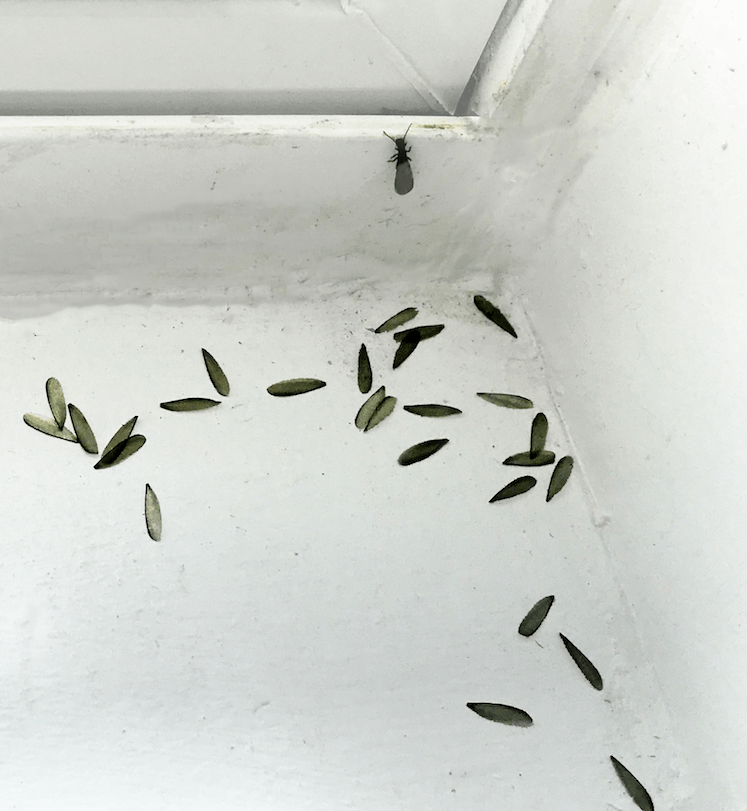
Termites are even more dangerous than ants as they can damage the walls and the wooden structure of a home.
Some termites get into walls from the ground up. They favor damp wood and easy access routes to this type of wood.
Some of the early signs of termites in walls include seeing small holes in wall trim or hearing sounds in walls.
Spotting shed wings either indoors or next to the outer walls of the house is also a sign of a possible termite invasion.
Holes in wood, noises, hollow wood, and chewed-up books are among the early signs of a possible wall termite invasion.
Unlike most types of ant invasions, termites in walls represent a problem that requires the help of a professional pest controller.
Drywood termites are more likely to appear behind dry walls or walls that aren’t affected by moisture.
3. Cockroaches
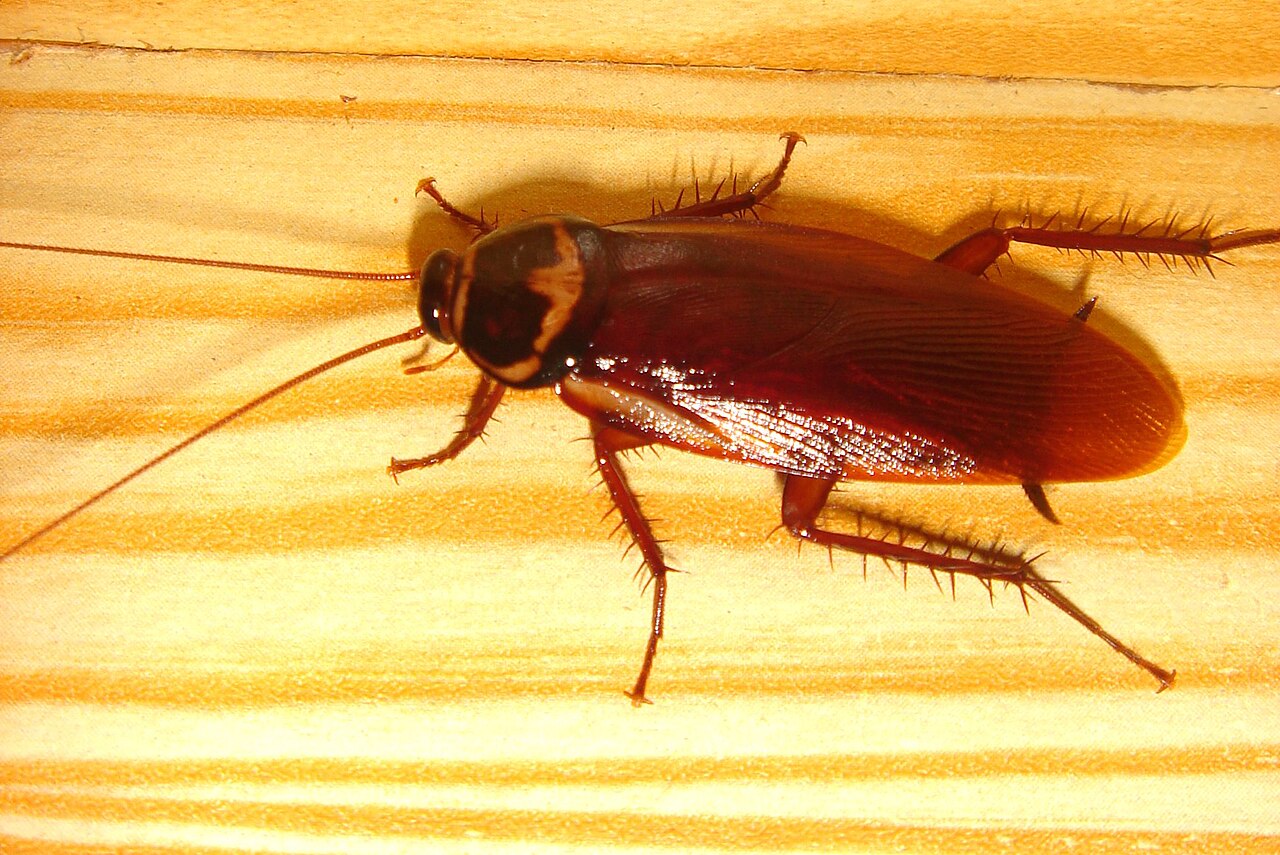
Some of the most likely types of bugs found indoors that may nest in walls include cockroaches. These small bugs have many reasons to be here.
These reasons include food, shelter, moisture, and a dark place to hide from predators.
From baby to adult cockroaches, there’s always a risk of an invasion once these bugs settle indoors.
While food can rarely get behind walls, moisture may attract them to this hard-to-reach area.
A water leak or high indoor moisture may be among the drawing elements that attract these bugs to your home.
Basement walls are among the first to suffer from high humidity. Poor air circulation in basements is known to attract bugs.
However, properly sealed and insulated walls leave no crawling room for roaches.
Some of the early management techniques involve removing dead vegetation around the house.
Puddling water and other sources of excessive moisture around the house may also attract them inside.
4. Spiders

Spiders are often seen on walls and ceilings. Some of them are only seen on outer walls while others make it indoors.
The spiders on the outer walls of the house may be looking for insects attracted to lights on the house at night.
Spiderlings are young spiders that the female used to carry or which have just emerged. They may appear completely black.
Spotted on walls, floors, and ceilings, these spiders might be too young to build spider webs and they might crawl around the house for food.
Keeping spiders out of walls is a matter of cleaning and ensuring even small crawl points are properly sealed.
Eliminating typical spider food which includes insects is also one of the main preventive methods specifically targeting spiders.
5. Clover Mites

Clover Mites can make it inside walls from the lawn or from the vegetation around the house.
These types of bugs are more likely to live in walls affected by vegetation. They can be spotted on walls next to patios or even around the roof as these often suffer from overgrown mold.
Walls in basements are also likely to have mildew problems, one of the most important food sources for Clover Mites.
One of the reasons these types of bugs may seem to like living in walls is the protection they are offered here.
Most Clover Mites may even overwinter in walls which means there are high chances these bugs start to multiply even in cold weather.
6. Bed Bugs

One of the early signs of bed bugs in walls is seeing them on walls and ceilings in small numbers.
These bugs can rapidly move through walls, taking advantage of the tiniest cracks or openings.
Bed Bugs are small, measuring anywhere between 0.1 and 0.2 inches which means they can also use cables to get into walls.
Electricity cables are often the main route these bugs take into walls from the outdoors. They follow power lines as well as plumage to make their way to food and shelter, often found indoors.
Bed Bugs can bite as they spread through the house. Often overlooked as tiny black spots, these bugs need extermination.
Spotting a cluster of tiny black dots on walls, ceilings, or corners is a potential sign of a bug invasion.
7. Silverfish

Growing to a size of up to 0.5 inches, Silverfish are small elongated gray bugs that may live their entire lives around walls and ceilings in the house.
These small bugs have clear reasons to be on walls or ceilings. These are the main humidity and food availability reasons which make them stay unless properly managed.
Moisture and water damage create the ideal habitat for silverfish to nest indoors.
These bugs don’t care about the indoor or outdoor location they are in as long as there’s food and moisture.
Silverfish on upper walls or ceilings are a sign of potential water damage. Leaky pipes or even rainwater damages to the roof are among the causing factors for silverfish spreading around ceilings and walls.
These bugs may even start feeding on wallpaper. Both dry and damp wallpaper can be eaten by silverfish.
These bugs may also eat books and other cardboard or paper objects rich in glue and cellulose.
A species that can eat almost any type of soft item indoors, including soap, silverfish makes its way from a high-humidity place outdoors (such as a pile of compost close to the house) or as a result of water damage.
8. Ticks

Ticks only have one good reason to be indoors, food. Feeding on the warm blood of a mammal or of humans, ticks are carried indoors by accident.
Homes with pets such as dogs are likely to have ticks indoors.
These bugs can attach themselves to a host and end up on walls or ceilings easily.
Ticks can move up walls and they may be looking for the nest host from this high vantage point for a few days.
Carried indoors from shrubs, trees, and tall vegetation around the home, ticks pose the risk of biting and attaching themselves to the skin of pets, humans, or animals around the house.
9. Dust Mites

As ticks, dust mites are also highly dependent on humans and animals to live and survive in walls, on walls, or ceilings.
Dust mites are experts at finding shed skin as quick meals.
This is why dust mites are likely to live on bedroom walls and ceilings. These types of bugs also take advantage of dust buildup as well as shed skin on clothes and textiles around the house.
Some of the early signs of dust mites include sneezing. A runny nose, red eyes, and allergy-like reactions are late signs of a possible dust mite invasion.
Unlike other types of bugs on walls, dust mites aren’t visible as they’re very small.
As small as 1/100th of an inch, dust mites cannot be seen with the naked eye. This is why all dust mite problems tend to be confirmed later, once they’ve established themselves on walls, books, clothes, or bed linen.
10. Mold Mites

Mold mites are as small as dust mites and are also not visible to the naked eye.
Unlike dust mites, mold mites can live both on walls and on the ceiling. These mites appear together with mold and mildew.
Their presence indoors is tied to the presence of mold, a type of fungi they feed on exclusively.
Old homes or even new homes that suffer from high humidity and low air quality are among the most common types of invaded spaces.
The presence of mold in corners, up on walls, or the ceiling is almost certain to attract mold mites.
Removing mold from these spots is only a temporary fix as mold is the result of high indoor humidity which needs to be fixed to also eliminate mold mites.
Too small and almost clear-colored, mold mites aren’t easily visible and not easy to remove as a result.
11. Booklice

Booklice are some of the smallest types of bugs on walls. They measure around 1mm and have a pale color.
Despite their size, booklice may be spotted when moving around on walls and ceilings as they move fast.
Excessive dampness and mold are among the first reasons booklice are even present on walls.
These bugs multiply in humidity-affected areas such as on furniture and walls.
They lay pale-colored eggs directly on the mold and consider eating mold off different surfaces such as books and cupboards.
Eliminating these types of bugs involves eliminating mold and high humidity.
Even then, booklice may still live on for a few extra days or weeks. These bugs can live up to 6 months and may lay hundreds of eggs each which means they tend to spread quickly.
12. Fleas

Fleas are small red-brown bugs that feed on blood. They are a constant problem outdoors and indoors, especially in homes with pets.
These blood-sucking bugs can quickly make their way to almost any location around the house as they can jump high.
Fleas can jump a distance of almost 150 times their body length instead of flying. They use this atypical agility to move around quickly.
They can end up on walls, ceilings, furniture, carpets, or even in the cupboards.
Bugs of this type end up indoors carried by a host such as animals. Pets tend to carry fleas indoors after spending time either out in nature or together with other pets already infested by fleas.
Since they die without a host, fleas may be easy to deal with. However, they can also bite if left unmanaged.
Dog fleas can move hosts to humans or other animals but they eventually die within a few days if falling from a host.
Otherwise, it’s worth checking the dog of the house as fleas can live up to a couple of weeks on a host.
13. Centipedes
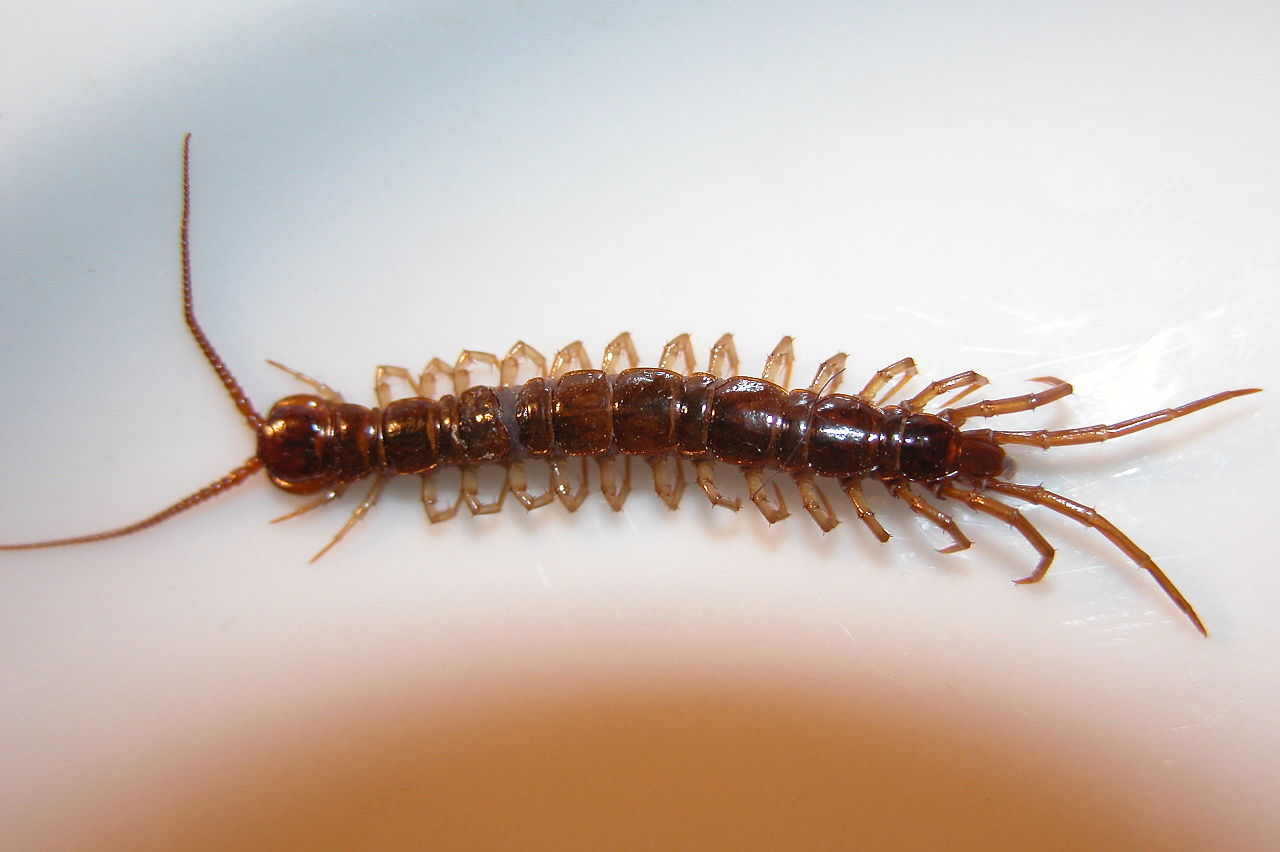
Centipedes are among the bugs with the most legs to invade homes. They can have more than 15 pairs of legs and move indoors for food.
Centipedes are likely to be around walls and ceilings when they find food such as insects.
These bugs are known to feed on other bugs in the house such as cockroaches. They eat flies and spiders as well as silverfish, another common species in bathrooms and basements.
Known for their multiple long legs and antennae, centipedes appear similar to worms with hundreds of legs.
They can have more than 100 legs and easily move up walls for food.
As with other bugs, preventive measures tend to work the best in keeping them out. Centipedes can bite, and removing them by hand isn’t the best idea.
You can use a vacuum cleaner to get them out of the house.
14. Mosquitoes

Lights, food, warmth, and moisture are among the main reasons mosquitoes fly indoors.
They can take advantage of a split second when the door or window is open to fly indoors.
Mosquitoes like and need moisture to survive and breed. They often breed in damp areas around the house and move on outer walls at night, attracted to lights.
They can then easily fly indoors whenever they get the chance.
Mosquitoes can land on walls and ceilings and wait for the night to suck the blood of home inhabitants. While they can bite at any time of the day, most mosquitoes are nocturnal.
Elimination tactics are mostly tied to preventive tactics in mosquitoes.
15. Wasps

Food, warmth, or a place to nest are among the main reasons wasps make it indoors.
These types of flying insects are known for their stinging capacity. They may be looking for spiders or other insects to eat.
Many wasps seek out indoor shelter when outdoor temperatures drop.
Some wasps, such as queen wasps, even overwinter indoors. They come out when the weather gets warm to establish a new nest and colony.
During the warmer months, wasps can establish themselves in the attic or other higher remote areas around the house such as the upper floor.
From here, wasps can move around the house but never too far away from their nests.
Spotting more than one wasp on walls or ceilings can be an indication of a wasp nest indoors or on the outer walls of the house accordingly.
16. Bees
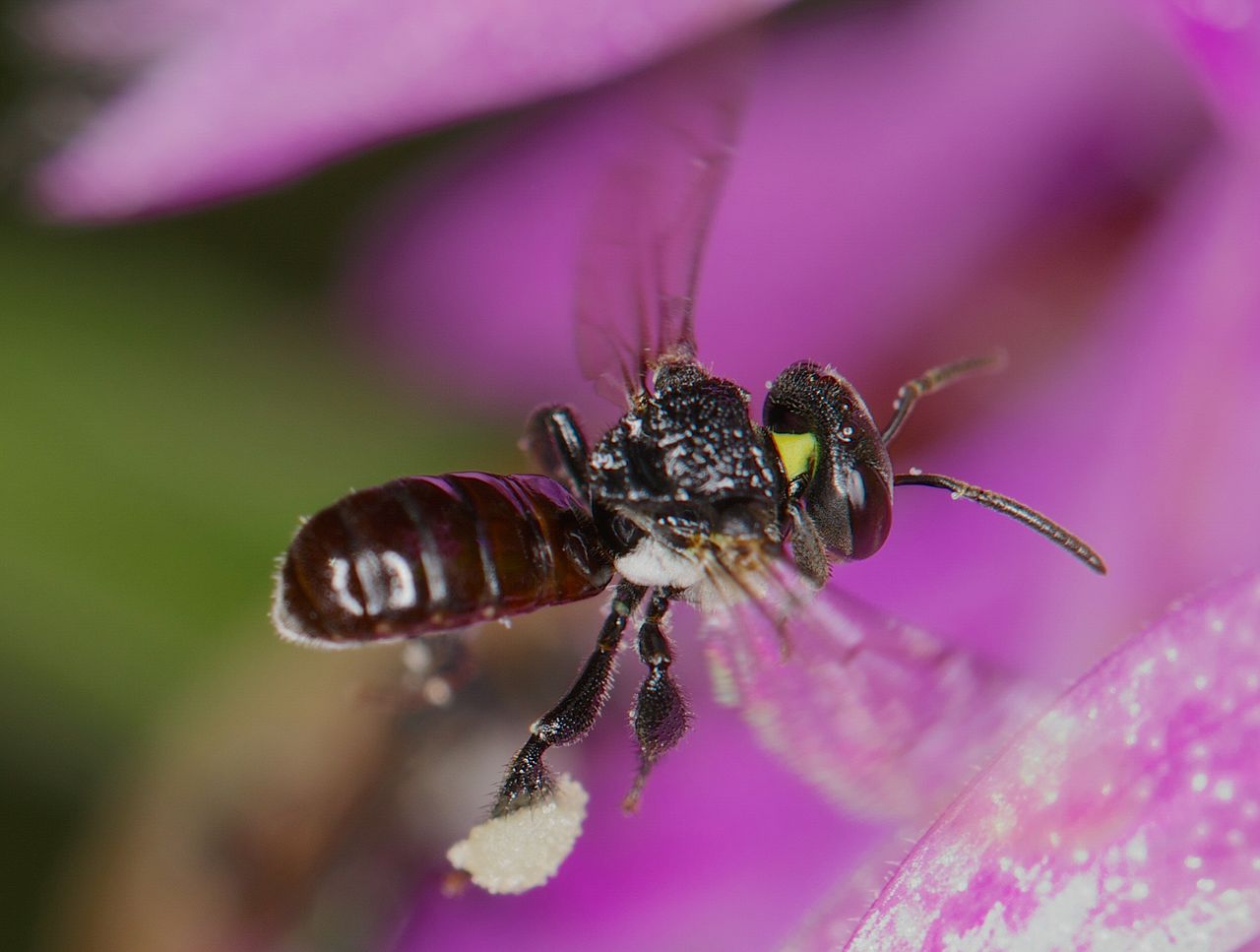
Bees may accidentally get indoors or move in for food.
They always look for a way to return to their nests but some types of bees may nest in the ground, in the backyard.
This means they are always close to their home and leaving out sweet foods such as fruit or avoiding cleaning juice spills may attract them indoors.
Bees are often attracted to bright surfaces such as walls and ceilings. Bright colors may attract them as much as lights attract insects at night.
Most bee species measure at least 0.8 inches and they are easy to spot. Furthermore, the buzzing sound of their rapidly flapping wings also means you can hear bees inside the house, unlike with other types of bugs.
17. Carpet Beetles

Reaching a size of around 4mm as adults, multicolored dome-shaped bugs with brown, yellow, black, and white spots are known as carpet beetles.
These types of bugs may be spotted on walls and ceilings when there’s an infestation.
Their spread is quick when left unmanaged which means carpet beetles are known as home pests.
Bugs of this type eat different types of natural fibers when young. There’s plenty of food for them indoors which includes natural fibers such as wool, fur, and cotton.
Adults of the species like to eat plant pollen and may still survive and breed indoors for a long time if there are houseplants around.
Carpet beetles may also feed on plant pollen outside of the house and make their way indoors on occasion.
18. Fruit Flies

As their name suggests, fruit flies are indoors to eat fruit. Any type of ripe and overripe fruit attracts these flies.
Fruits left out in the open attract the small flies which may even lay eggs on them and start multiplying indoors.
A common problem in warm climates or during the summer, these flies may make their way onto the walls of the house from the fruits in the backyard or in the garden.
Any type of overripe fruit on the ground or which is left unpicked from trees around the house can attract these flies which may quickly become a nuisance pest.
19. Drain Flies

As fruit flies, drain flies also have their preferences for food and habitat. Coming-up drains need a lot of moisture and organic material buildup to live and breed indoors.
As their name suggests, these flies breed in drains. The kitchen drain is their main source of organic material buildup but they may also arise from the bathroom, from the garage sink, or the service room sink.
Their spread is rapid and they may quickly move around the house.
A single dray fly lays between 30 and 100 eggs which means their spread is considerably faster than the spread of other bugs and insects that may end up on walls and ceilings.
20. Pantry Moths

You can find pantry moths on walls and ceilings while their caterpillars may be seen directly on dry foods around the house.
These types of moths may lay more than 100 eggs at a time. Their emerged larvae measure around 0.5 inches which means they can easily be spotted, together with the adult moths.
Spotting these moths on walls and ceilings is an indication of infested food.
Some of the typical foods these moths infest include pasta, dog food, flour, and other type of dry food.
Long shelf life is one of the reasons this type of food doesn’t get regularly checked for possible bug infestations.
This type of food is also rarely used as opposed to fresh food in the fridge which means there might already be hundreds of pantry moths and caterpillars in the house when spotting them on walls and ceilings.
21. Beetles
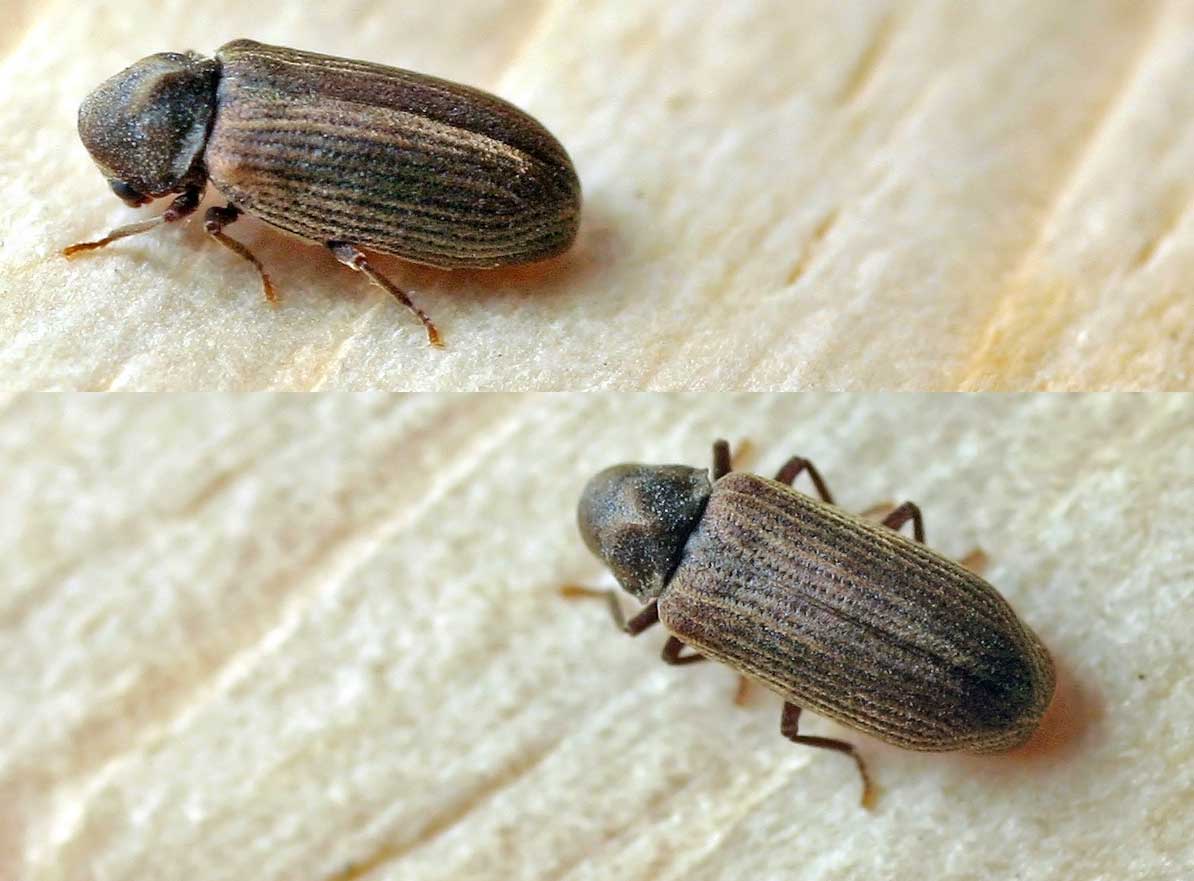
The Common Furniture Beetle or The Japanese Beetle is among the tens of species of beetles that may make it indoors.
Many of these bugs aren’t true pests while others can live in old furniture and basements as long as they have proper food.
Walls, floors, and furniture can be infested by The Common Furniture Beetle. This species can dig out holes in your old furniture for years before being discovered.
The average Common Furniture Beetle can live more than 3-4 years when left unmanaged.
They lay eggs and multiply in the meantime. Much of their damage can be prevented with early management techniques.
22. Maggots
Maggots are a type of annoying home fly. They move indoors attracted to garbage and trash cans found right next to the house.
Most maggots only settle on walls and ceilings next to their egg-laying location.
This is why open trash cans in the kitchen tend to be the area where they revolve the most.
A single maggot can lay hundreds of eggs which hatch quickly and create a small invasion.
Dealing with these annoying flies involves proper food waste management and sealing off all food, especially rotting food that attracts maggots the most.
23. House Flies

Food such as trash also attracts house flies. These insects are also attracted to moisture and they may easily transition indoors.
House flies may be one of the most common types of flies to notice on walls as this is where they escape whenever you try to manage them.
Leaving windows and doors open might not be sufficient to clear these flies as they prefer to stay indoors where moisture and temperature make them more comfortable.
Food left out in the open is surely attracting a high number of house flies which may not leave an area s long as there’s food around.
24. Stink Bugs

Fruit attracts a large number of flies and bugs indoors. Noticing stink bugs on walls and ceilings is also an indication that there’s food for them around the house.
Noticing these bugs indoors also signals there are many entryways for them to consider indoors. Sealing up all gaps and openings in walls is crucial to prevent stink bug invasions in the fall.
This is the time they seek out indoor shelter to find a warmer place to live in.
Stink bugs may eat apples, strawberries, or peaches, all typical fruits found around the house.
Keeping these fruits on the table where they can overripe is one of the habits that may attract these shield-shaped bugs indoors.
25. Woodlice

A brown or dark brown bug of around 15mm, Woodlice makes it indoors by accident or to seek out moisture and shelter.
These small bugs aren’t a big problem once indoors as they eat rotting plant material, which may not be easy to find indoors.
However, they can be a problem when spotted on walls, floors, or furniture.
Removing them from the house is easy just by using a vacuum cleaner. Spotting them indoors should also raise some questions about the vegetation status outside of the house, one of their most likely sources.
How to Get Rid of Them
Getting rid of bugs on walls and ceilings is not complicated. Some of them (such as centipedes) should not be removed by hand since they can bite.
Other bugs can be squashed, but this isn’t recommended due to the marks they may leave on walls and ceilings. Here are 2 methods to quickly remove them from your home.
Use a vacuum cleaner
A vacuum cleaner such as a stick vacuum cleaner is long enough to reach even the ceiling. Vacuuming up bugs and insects is the fastest way of clearing them from the house.
You can vacuum up various bugs yourself and discard the vacuum bag or dust compartment in a sealed bag into the trash can.
Consider essential oil sprays
Essential oils may kill and even repel bugs in a given area. Some bugs hiding in wall cracks may not be possible to draw out with a vacuum cleaner.
Using bug spray is one of the methods to draw them out or even kill them. But many types of bug sprays are toxic. As a result, using natural alternatives can be better.
A mixture of water and essential oils such as peppermint oil are among the natural do-it-yourself solutions to kill these bugs and prevent them from coming back to the same area for days and weeks.
Prevention is key
Preventing bugs and insects on walls and ceilings is the best way of dealing with them and staying clear of issues such as having pests indoors.
All of the following solutions are recommended to keep them out for good.
Install window mesh screens
A physical barrier is one of the fastest ways of keeping bugs out for good. Window mesh screens may seem difficult to install, but they can be added to any door and window.
These mesh screens can keep flies, mosquitoes, and cockroaches out. Mesh screens considerably lower the risk of a bug invasion during the bug season.
Installing them in key areas such as on the kitchen window or the bathroom window is important. These are rooms with high moisture and plenty of food, common elements that draw bugs in.
Caulk up wall cracks
Wall cracks are among the most overlooked pathways bugs take to get indoors. They can squeeze through the smallest openings to move indoors.
Checking up on the wall is important every year. Most people should check for wall cracks in the spring.
Walls contract in cold weather, over the winter. They expand in the spring and this may lead to small cracks which favor all types of tiny bugs on walls and ceiling.
You can use a flashlight to determine the location of wall cracks that need immediate caulking.
Remove old furniture
Old furniture is one of the places preferred by a series of bugs such as beetles. They may end up nesting in old furniture and multiplying rapidly.
An old couch is known to pick up stains, smells, and shed skin over the years. It provides an ideal habitat for all types of bugs which eat the buildup on the couch.
Old rugs, particularly those of natural fibers, are also known to attract bugs. Carpet beetles and their larvae simply nest in rugs and start eating them away.
Removing old furniture such as sofas and armchairs is as important as removing old carpets for a bug-free home.
Reduce indoor humidity levels
High indoor humidity favors almost any type of bug. Cockroaches are an example of a highly invasive species that can easily multiply in high humidity.
Some of the areas of high humidity include bathrooms and kitchens. Investing in proper ventilation or even adding larger windows to these key areas of the house may spare your walls and ceilings from bugs.
Furthermore, mold is favored by high humidity. It’s always important to ensure your home is properly ventilated even if mold isn’t yet visible.
Booklice and other bugs may feed on mold and mildew not yet easy to spot.
Consider frequent home cleaning
Cleaning the house regularly ensures there are no bugs, larvae, or food for bugs around. Having a proper cleaning schedule helps keep most bugs out.
Cleaning solutions such as those based on essential oils even help repel all types of bugs.
Vacuuming, mopping, dusting, and spraying the house with essential oils that smell good but repel bugs are among the most common regular actions that keep crawling and flying invaders out.
Clear dead vegetation around the house
Dead vegetation is a breeding ground for cockroaches, woodlice, and other types of bugs.
Piles of dead leaves, rotting fruit, and dead plants around the house and even growing on the house favor having these invaders inside of your home.
Clearing out dead vegetation is a regular task to be considered by those living in homes.
Even trimming vegetation can help reduce the factors which favor bug spread such as shade and high soil-level moisture.
Don’t leave food out
Food that’s left outside in the open is bound to attract bugs and insects. Many of these are only interested in certain types of food.
Fruit flies eat and lay eggs on overripe fruit. However, other types of flies are generalists and may eat food left out in the open and even trash that’s easily accessible.
Decaying food in an open trash can is a breeding ground for fly larvae. These flies can even infest fresh food upon direct contact.
Food should ideally be stored in containers, in the refrigerator, or in their original packaging.
Have a trash management system to stick by
Poor trash management leads to creating a breeding ground for bugs that end up on floors, walls, and ceilings.
Open trash cans and open trash containers facilitate quick insect access.
Better home trash management also involves removing all the used personal items from the bathroom. High bathroom humidity as well as leftover paper and dirty towels can serve as food for bugs that feed on cellulose and natural fibers.
Clear out all puddling water around the house
Stagnant water such as rainwater in buckets, barrels, and other containers represents breeding grounds for flies and insects that lay eggs in water.
Mosquitoes thrive on puddling water and easily make their way indoors attracted to warmth, humidity, and lights.
Some mosquitoes are nocturnal while others are diurnal or even crepuscular. They breed outside and make their way indoors at different types of the day.
Stagnant water sources are also found next to the outer walls of the home when watering plants. Flowers grown next to the house may be overwatered.
Excessive plant watering next to the house leads to an ideal humid environment for bugs and insects to thrive in.
Always check for water leaks
Leaky pipes and faucets can lead to major or minor water leak problems. Apart from the risk of flooding, these types of issues also lead to a humid environment bugs love.
Cockroaches specifically seek out high humidity and dark place such as the space under the sink to nest in.
While they may be seen on walls and floors, cockroaches and other bugs may be nesting in areas with water leaks.
Leak detection tools may be used to quickly scan the home for possible undetected water leaks.
Practice good hygiene when it comes to dirty sinks
Leftover food buildup in the sink is often the first breeding ground for flies and bugs. Drain flies thrive in this habitat and even lay eggs in the sink.
Cleaning out the sink after dishwashing is among the first steps to consider to stop organic material buildup in the sink.
Clogged sinks are also a result of organic material buildup. A clogged sink is a sign organic material buildup is a frequent occurrence that needs to be dealt with regularly.
Constantly check pets for bugs
Fleas and ticks are mostly carried indoors by humans or pets. Cats and dogs encountering other cats and dogs carrying ticks and fleas can easily catch them and bring them back to the house.
Even pets that spend a lot of time exploring the outdoors might pick up these bugs and bring them back indoors.
Checking the skin and coat of pets and dogs is mandatory for pet owners who’ve spotted ticks or fleas in the house.
A routine of always checking dogs after a walk out in nature is the best preventive measure when it comes to ensuring no attached ticks are carried back to the house.